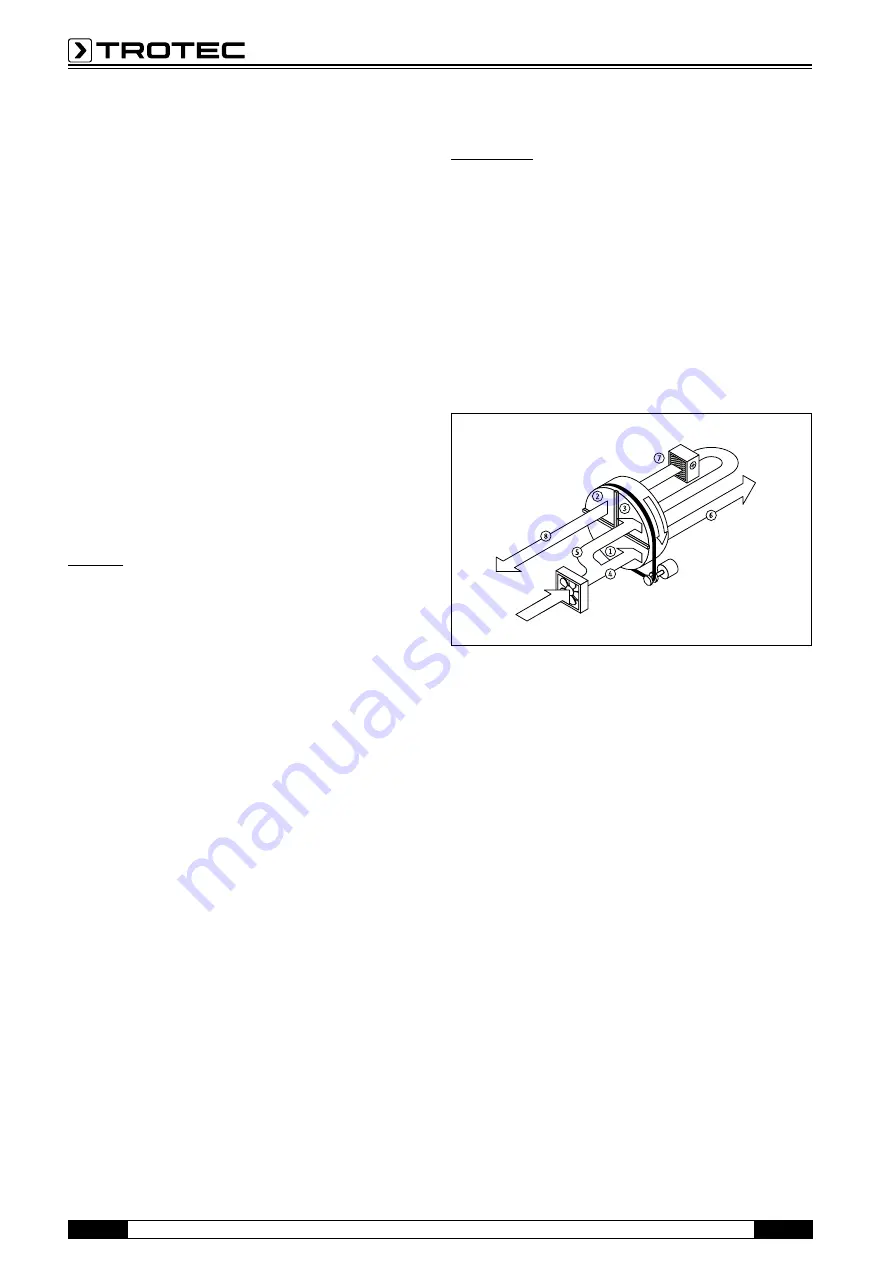
4
EN
User instructions – Adsorption dehumidifier TTR 160/250
Functional principle
Adsorption dehumidifiers work with a drying wheel (rotor) consisting of
layers of flat and corrugated fibres with a chemically bound silica gel.
This generates a honeycomb structure with numerous axial air channels
with a large surface and direct connections to the inner pore structure of
the silica gel.
Due to the favourable mechanic and physical properties of the drying wheel,
no silica gel is released and can be subject to saturated air (100 % rh),
however, not to drips of water. It is not flammable.
The basic design of a dehumidification unit is as follows:
•
Fan(s) for air delivery
•
At least two different sections for delivery of process air (to be dehu-
midified) and regeneration air (humid exhaust).
•
Drying wheel for dehumidification
•
Drive unit with gear motor, toothed belt disc and toothed belt
•
Heating unit for heating of the regeneration air
During dehumidification, the drying wheel continuously turns at low
speed (3 to 30 rpm, depending on the configuration). This way, process
air and regeneration air are simultaneously applied to the drying wheel
via the sections so that it can permanently absorb and release humidity.
Process air
Air to be dehumidified is taken in by means of a fan and divided into two
air streams: Process air (4) and regeneration air (5).
The process air (4) flows through the dehumidification section (1) of the
drying wheel. In this process, the humidity in the air is removed by means
of the absorbent (silica gel) and bound (adsorption).
After having passed the section, dry air (6) is released into the space.
Regeneration air
The second air stream (5) is passed through the rinsing section as regen-
eration air. This section is used for the recovery of the heat of adsorption
generated during dehumidification.
At the same time, the drying wheel is cooled which results in reduced
energy input and improved dehumidification performance, in particular
for lower dew points.
Further on, the air stream is passed through a heating unit (7), the tem-
perature of the air is increased to approx. 100 - 120 °C (depending on the
intake temperature), while its relative humidity is considerably reduced.
Afterwards, the air that was prepared in this process absorbs the humid-
ity bound in the silica gel (desorption) when passing the regeneration
section (2). Afterwards, the extremely humid regeneration air (8) is deliv-
ered outside through the humid air outlet.
Fig.: Functional principle TTR 160/250


































